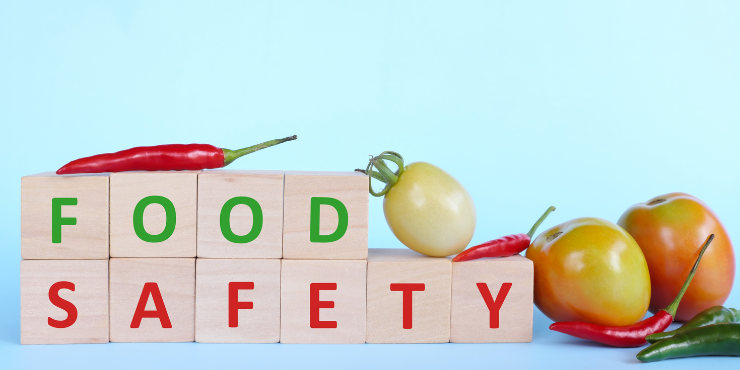What Is The Best Way To Prevent Poor Food Safety- When it comes to ensuring the safety of our food, adopting the best preventive measures is paramount. From handling to storage, understanding the most effective methods to prevent poor food safety is crucial. Let’s delve into the strategies and practices that can safeguard against foodborne illnesses and maintain high standards of food safety.
In this article, we will explore the best ways to prevent poor food safety and promote a safer food environment for everyone.
Understanding the Causes of Poor Food Safety
Poor food safety can arise from various factors, including:
Lack of Proper Hygiene Practices
Improper handwashing, inadequate cleaning of utensils, and unclean food preparation surfaces can contribute to the contamination of food.
Inadequate Temperature Control
Failure to maintain proper temperatures during food storage, cooking, and serving can lead to the growth of harmful bacteria.
Cross-contamination
Cross-contamination occurs when pathogens from raw foods are transferred to cooked or ready-to-eat foods, leading to foodborne illnesses.
Poor Storage Practices
Improper storage of perishable foods can result in spoilage and the growth of harmful bacteria.
The Impact of Poor Food Safety
The consequences of poor food safety can be severe, including:
Health Risks
Consuming contaminated food can lead to food poisoning, gastrointestinal infections, and other serious illnesses.
Economic Losses
Foodborne illnesses can result in hospitalization, loss of productivity, and financial burdens on individuals and businesses.
Reputation Damage
Incidents of foodborne illness can tarnish the reputation of food establishments and food manufacturers, leading to loss of trust among consumers.
Best Practices for Preventing Poor Food Safety
To prevent poor food safety, it is essential to adopt the following best practices:
Ensuring Hygiene in Food Handling
Food handlers should practice proper handwashing, wear clean attire, and maintain cleanliness in food preparation areas.
Proper Temperature Control
Foods should be stored, cooked, and served at appropriate temperatures to prevent the growth of harmful bacteria.
Preventing Cross-contamination
Separate raw foods from cooked or ready-to-eat foods, use separate utensils and cutting boards, and practice proper sanitation to avoid cross-contamination.
Effective Storage Practices
Store perishable foods at the correct temperature and in appropriate containers to maintain freshness and prevent spoilage.
Training and Education
Education and training play a vital role in promoting food safety:
Importance of Training for Food Handlers
Food handlers should receive proper training on food safety practices, including hygiene, temperature control, and sanitation.
Continuous Education on Food Safety Standards
Regular training sessions and updates on food safety regulations and standards help ensure that food handlers stay informed and compliant.
Regulatory Compliance
Government regulations and standards play a crucial role in ensuring food safety:
Role of Government Regulations
Regulatory agencies establish and enforce food safety standards to protect public health and ensure the safety of the food supply.
Compliance with Food Safety Standards
Food establishments and manufacturers must adhere to regulatory requirements and undergo inspections to ensure compliance with food safety standards.
Utilizing Technology
Advancements in technology can enhance food safety monitoring and management:
Food Safety Monitoring Systems
Automated systems for monitoring temperature, humidity, and other critical factors help identify and address potential food safety risks.
Traceability and Transparency in the Supply Chain
Technologies such as blockchain enable greater traceability and transparency in the food supply chain, allowing for rapid response to food safety incidents.
Collaboration and Communication
Collaborative efforts and communication among stakeholders are essential for promoting food safety:
Importance of Communication Among Stakeholders
Effective communication among food producers, suppliers, regulators, and consumers facilitates the exchange of information and coordination in food safety initiatives.
Collaborative Efforts in Ensuring Food Safety
Partnerships between government agencies, industry organizations, and advocacy groups can lead to shared resources and expertise in addressing food safety challenges.
Consumer Awareness
Educating consumers about food safety practices empowers them to make informed choices:
Educating Consumers About Food Safety Practices
Providing information on proper food handling, storage, and preparation helps consumers reduce their risk of foodborne illness.
Encouraging Informed Choices
Labels, certifications, and educational campaigns can help consumers identify safe and reputable food products and establishments.
Prioritizing food safety through effective preventive measures is essential for safeguarding public health and well-being. By implementing proper handling, storage, and hygiene practices, individuals and food establishments can significantly reduce the risk of contamination and foodborne illnesses. Remember, proactive measures are key to ensuring that every meal is safe and enjoyable for all.

Hello, my name is Lora J Fusco, and I am a passionate chef with a wealth of experience in the culinary world. I am not in the kitchen making meals. I love to share my insights and adventures by writing on my blog.
Food and cooking are not just my job but also my passion. I am thrilled to have the chance to connect with you through my writing. Welcome to my space, and I hope you enjoy exploring the wonderful world of food with me!
